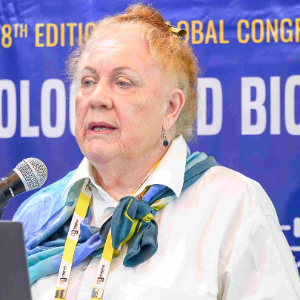HYBRID EVENT: You can participate in person at Singapore or Virtually from your home or work.
Plant Cells
Plant Cells
The basic building block of life in all plants are plant cells. They are eukaryotic cells, which means they have a cell membrane, an organelle, and a nucleus. Animal cells tend to be smaller than plant cells, which are encased in a cellulose-based hard cell wall. The plant cell is protected and given structure by its cell wall. The nucleus of the cell is where genetic material like DNA is kept. Organelles that produce energy for the cell include the chloroplast and mitochondria, while others that are involved in protein synthesis and transport include the endoplasmic reticulum and golgi apparatus. The vacuole, a sizable organelle, helps maintain the internal environment of the cell by storing water and other chemicals.
Committee Members

Mohammad Babadoost
University of Illinois, United States
Mary Cole
The University of Melbourne, Australia
Valasia Iakovoglou
UNESCO chair Con-E-Ect, International Hellenic University, Greece GPB 2026 Speakers

Satya S S Narina
Virginia State University, United States
Sara Hailemariam
Purdue University, United States
Midhat Mahboob
Lincoln University, New Zealand


Title : Exploring the genetic diversity in tannin-rich forages to explain the large intra species variability in tannin content
Selina Sterup Moore, Aarhus University, Denmark
Title : Isolation and functional properties of biomolecules of plants and its application
Balagopalan Unni, GEMS Arts & Science College (Autonomous), India
Title : Primed for the future: PGPR and the promise of sustainable, heritable crop resilience
Prashant Singh, Banaras Hindu University (BHU), India
Title : Revealing allelic variations in candidate genes associated with grain yield under salinity stress between two contrasting rice genotypes
Nisha Sulari Kottearachchi, Wayamba University of Sri Lanka, Sri Lanka
Title : Adaptive strategies of Aristida L. species across ecological zones of Pakistan: Linking soil characteristics with morphological and physiological traits
Iram Ijaz, University of Agriculture Faisalabad Pakistan, Pakistan
Title : Ethnobotanical survey and abundance of weeds in selected Manihot esculenta (cassava) Crantz farms in Osun state, Nigeria
Dada Caleb Mayokun, University of Ibadan, Nigeria